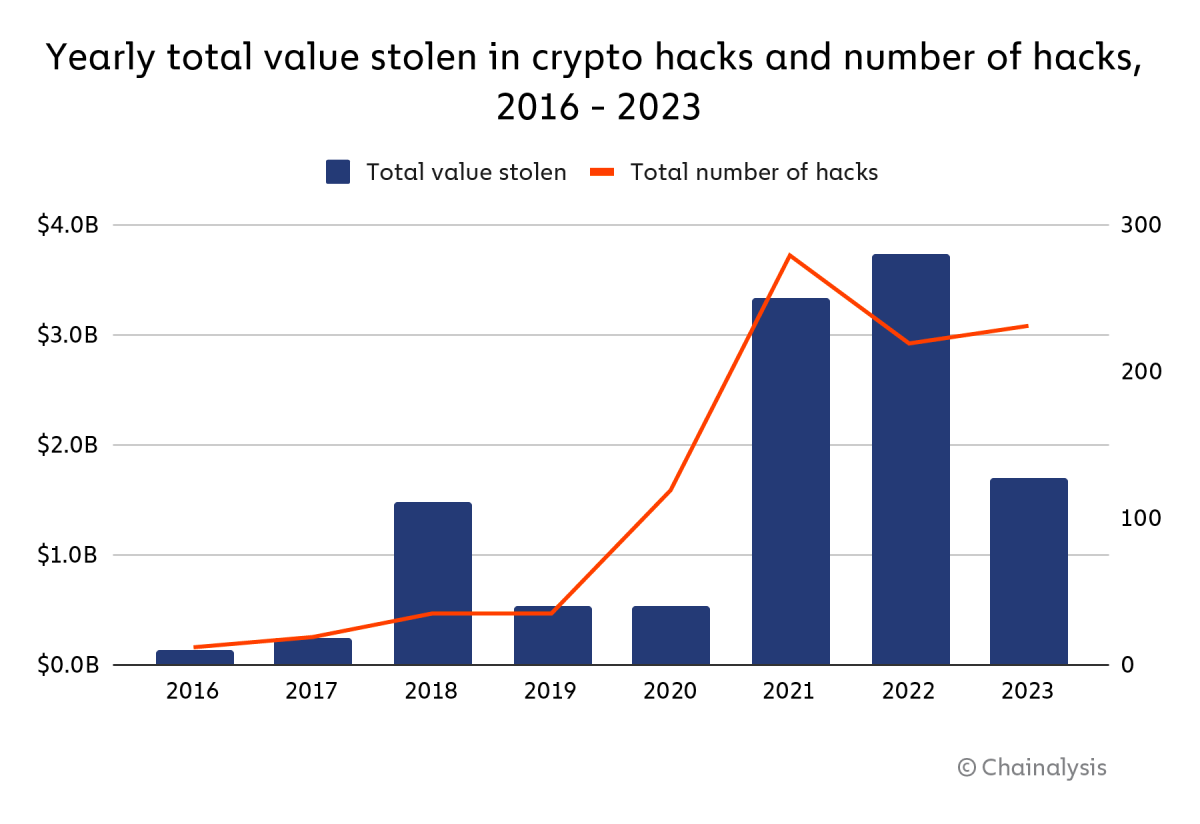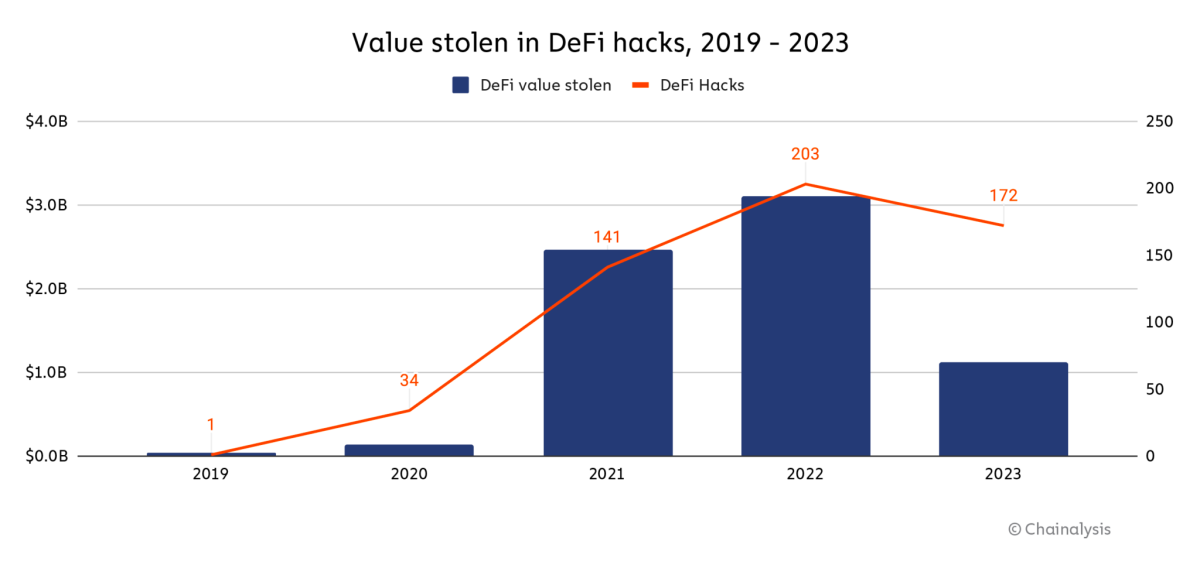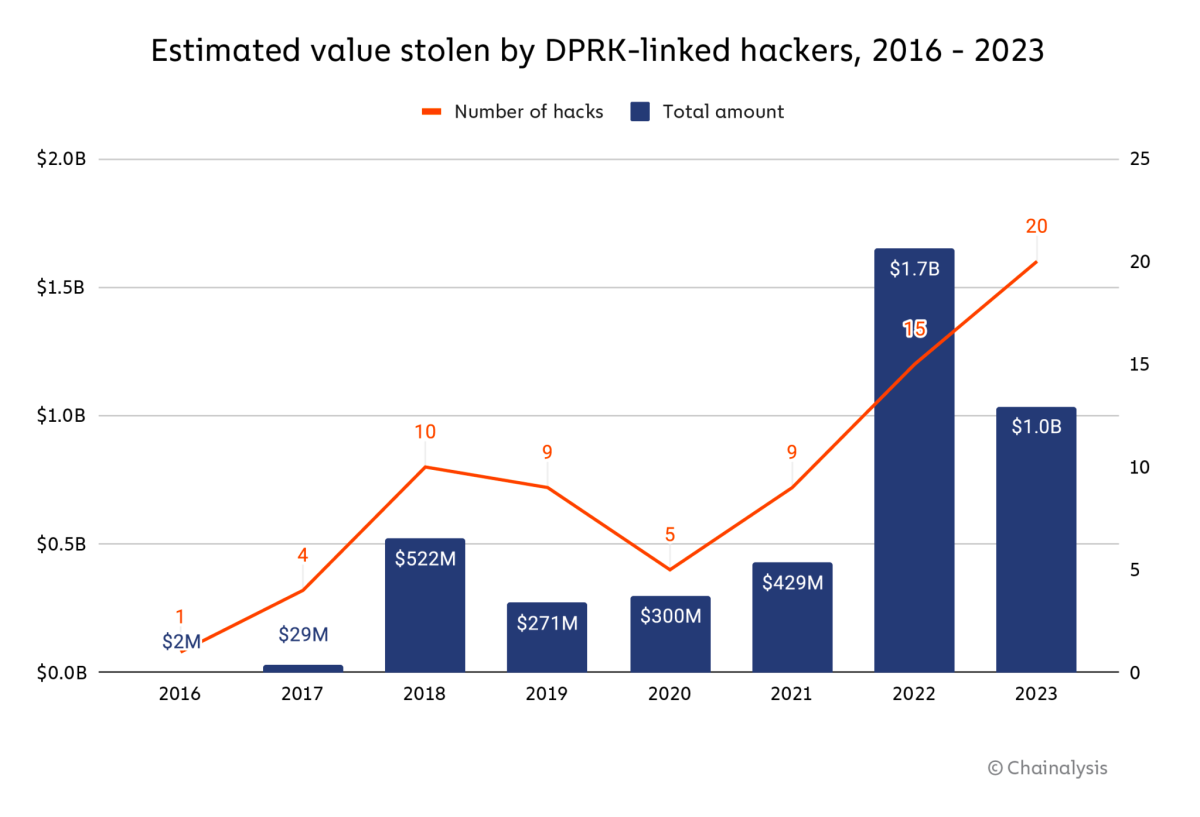Cryptocurrency hacking is not an easy hustle, it seems. Why? It’s because the total amount of money stolen from crypto crime fell a significant 54.3 percent to US$1.7 billion (AU$2.58 billion) last year.
Chainalysis, a crypto address tracker that works with law enforcement, released a preview of the firm’s annual Crypto Crime Report. While 2022 remained the “biggest year ever” for crypto theft with US$3.7 billion (AU$5.63 billion) stolen, 2023 saw a sharp drop with US$1.7 billion (AU$2.58 billion) stolen.
Yikes for the criminals.

Crypto crime: Why less money?
Why? According to Chainalysis, it’s mostly due to a huge drop in DeFi (“decentralised finance”) hacking. In 2022, crypto criminals stole a staggering US$3.1 billion (AU$4.71 billion) from DeFi protocols. In 2023, that number plunged to US$1.1 billion (AU$1.67 billion), representing a 63.7 percent drop.

Nonetheless, the report warns that DeFi hacks are still very much a popular way for one’s funds to get stolen due to inherent vulnerabilities in DeFi protocols. These vulnerabilities stem from “protocol operators focusing primarily on growth, and not enough on implementing and maintaining robust security systems.”
North Korean hackers
Crypto criminals from North Korea remain the most notorious in 2023, with 20 hacks reported and a total of US$1 billion (AU$1.58 billion) stolen. These hackers stole most frequently from DeFi platforms with US$428.8 million (AU$652 million), followed by crypto exchanges at US$330.9 million (AU$503 million).

How’s Australia going?
According to the Australian Signals Directorate’s Cyber Threat Report 2022–23, Australia recorded a 23 percent increase in cyber reports last financial year. One report about cyber crime was received every 6 minutes on average, highlighting the rising prevalence of such threats in the country.
Dr. Maria Milosavljevic, Chief Information Security Officer at ANZ, writes that with the AI boom in the past year has also “[opened] the door for new types of attacks, or ‘adversarial AI’.”
“This refers to exploiting vulnerabilities in AI itself, using traditional techniques or new ones targeted specifically at AI, such as manipulating AI algorithms or the data used by them,” she adds.





